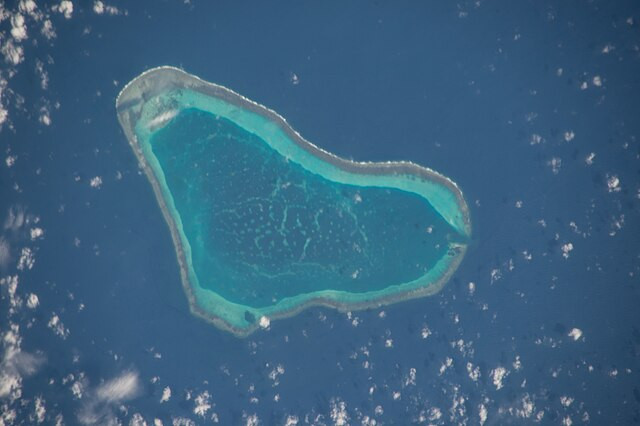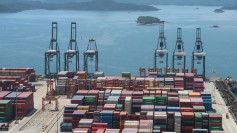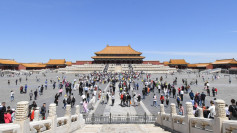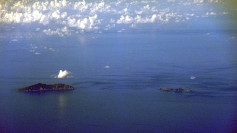China escalated tensions in the South China Sea this week with a high-profile military deployment over the disputed Scarborough Shoal, while Philippine officials warned that any move toward militarization of the feature would cross a red line.
The People's Liberation Army Southern Theater Command said Wednesday it flew an H-6 bomber armed with YJ-12 supersonic anti-ship missiles over Scarborough Shoal, accompanied by three Type 054A frigates and J-16 fighter jets. A statement described the drills as combat readiness patrols intended to "reinforce patrols and vigilance, further strengthen control and management of relevant areas, and effectively counter unlawful infringements and provocations."
The bomber, an upgraded Cold War-era platform, is capable of striking targets 500 kilometers away. Chinese state media also released footage of frigates Chenzhou, Liuzhou and Bayanner sailing in formation and launching a Z-9 helicopter near the shoal. "The move aims to firmly safeguard China's sovereignty and security while maintaining peace and stability in the South China Sea," the release said.
Scarborough Shoal-known as Huangyan Island in China and Bajo de Masinloc in the Philippines-has been a persistent flashpoint between the two countries. Located 120 nautical miles west of Luzon, the shoal lies within the Philippines' exclusive economic zone, but Beijing has maintained near-constant patrols since taking control in 2012 after a standoff with Manila.
Philippine Armed Forces Chief General Romeo Brawner responded Friday by stressing that Manila "will not allow" Scarborough Shoal to become another Mischief Reef, which China occupied in the 1990s and later turned into a fortified outpost with a runway, radar systems and missile batteries. "Once they build a structure there, that would be a different story. We have several options that we could do. Diplomatically, we could file protests, but we are watching so that we will not have a repeat of Mischief Reef," Brawner told a forum of foreign correspondents.
The warning followed Beijing's recent announcement of plans to establish a "national nature reserve" at Scarborough, a move Manila dismissed as a "clear pretext for occupation." China has defended the reserve proposal as an environmental initiative to protect the atoll's ecosystem, but Philippine officials see it as a potential precursor to permanent facilities.
The dispute has intensified since August, when a Chinese navy destroyer collided with a China Coast Guard cutter during operations near the shoal. Philippine fishermen, operating under Manila's Kadiwa initiative to protect livelihoods, have also reported harassment and dangerous maneuvers by Chinese vessels. Last month, a Filipino sailor was injured during an encounter with Chinese cutters.
A 2016 ruling by the Permanent Court of Arbitration in The Hague invalidated China's sweeping "Ten-Dash Line" claims and declared its blockade of Scarborough Shoal illegal, affirming its status as a traditional fishing ground. Beijing rejected the ruling and has continued to expand its presence across the South China Sea, including through artificial island construction.






